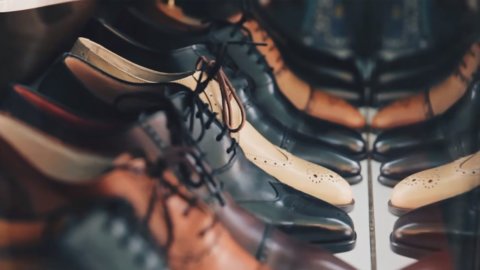Italian fashion is bursting with health, even if all that glitters is not gold. To cast a shadow on the brilliant preliminary final report of the textile, fashion and accessories sector (also including footwear, tanning, eyewear, leather goods, gold-jewellery) in 2018 presented in Milan by Confindustria Fashion, there is the data – in this case relating to 2017 – released by Badenoch & Clark according to which salaries in the fashion, textile, clothing and accessories sectors are positioned below the national average, with an average gross annual salary between 27 and 28 thousand euros gross per year, compared to the Italian average of 29.380 euros. A stain for a sector that was still among the champions of Made in Italy last year, with a turnover (Confindustria Moda data on Istat sources) now close to 96 billion, a exports further increased to 63,4 billion, with a trade balance exceeding 28 billion and represents almost a third of the surplus of the entire Italian manufacturing.
RECORD NUMBERS
To illustrate the records of the TMA sector (textiles, fashion, accessories) was Claudio Marenzi, President of Confindustria Moda and Pitti Immagine: “Ours is now the fourth Italian industrial sector for added value created, with 24,2 billion euros, behind only metallurgy, machinery and Food & Beverage”. And ahead of other strategic sectors such as furniture, means of transport, chemical products, pharmaceuticals. As regards the number of employees, the TMA is in second position, with about half a million employed (of which 41% in Lombardy and Tuscany) in about 66 companies (one out of five in Tuscany). But it is above all on an international level that the enlarged universe of Made in Italy fashion makes the difference: we are in first place in Europe both for added value and for the number of employees. There are a couple of facts that stand out: Italy produces over a third of European added value, slightly less than France, the United Kingdom, Germany and Spain combined. And, considering only the tanning sector, 54% of the workers of the entire continent work in Italy.
EXPORT
Numbers that testify to a real supremacy, which is also confirmed at a global level: with its over 60 billion euros of exported products (to be precise, 61,7 in 2017 and 63,4 expected in 2018), Italy is the second exporter of TMA in the world, behind only China. China which, moreover, confirms itself as a commercial partner with which we have a negative balance, even if in 2018 our exports to Beijing and its surroundings exceeded 2 billion (+13,6% from 2017), placing the Asian giant in eighth placed among the best commercial destinations (with a share of 4%) and at the same time imports to Italy decreased by 2,3%, even if China remains the first country from which we import, with a slightly lower share 20% of the total. The main recipient of Italian products remains France, which in the first 10 months of 2018 has already imported 5,6 billion, ahead of Switzerland and the USA. In proportion to the entire Italian manufacturing export, however, the first country is Japan: every 4 Italian products imported, one is from the TMA sector (a little more than one in reality, 26,9%). More or less the same percentage for the United Arab Emirates, while Germany in 90% of cases prefers to import other types of goods.
THE CHAMPIONS
Coming instead to the samples of the samples, the research by Confindustria Moda (“The first we have carried out since we were established”, President Marenzi was keen to recall) listed the 10 made in Italy products which are in first place worldwide – in respective category – in terms of trade balance. In first place are leather handbags (including shoulder bags), which we export for 3 billion more than we import; sunglasses (2,2 billion) and leather shoes with natural leather soles (2,1 billion) complete the podium. In the classification, however with a balance of less than one billion euros, there are also leather wallets and purses, worsted wool fabrics, natural leather belts and, further on (in second or third place in the world by balance), also wider consumer products such as sports suits for women or girls, plastic eyeglass frames, tights, cashmere sweaters, synthetic fiber coats.





